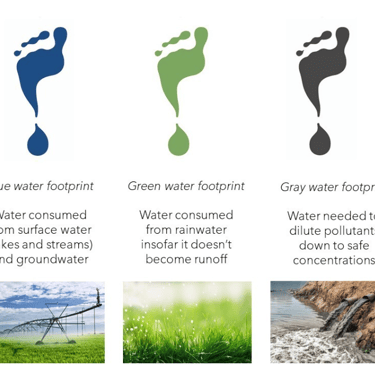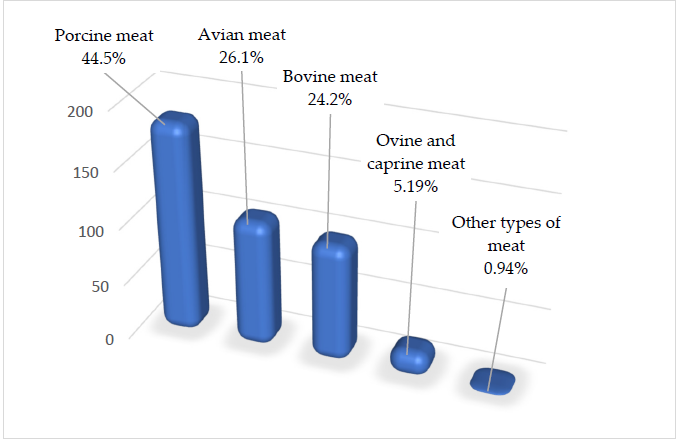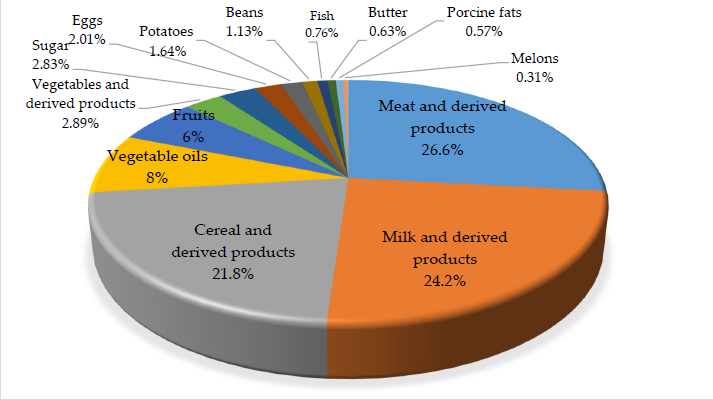Understanding the Water Footprint of Food Consumption Habits in Romania
WATER FOOTPRINT


Introduction
Water, the lifeblood of our planet, stands as a pivotal resource with implications far beyond its immediate importance. As we delve into the depths of water scarcity, it's evident that its uneven distribution poses a significant threat, magnified by the spectre of climate change. With a mere 2% of the world's water deemed fresh and even less accessible for consumption, it becomes imperative to explore the link between water scarcity and its impact on crucial sectors like food production.
In terms of water, agriculture is one of the most water-demanding sectors of our life. The link between water and meat production may not be clear to the average person but it is evident that meat production stands at the pillar of water footprint calculations.
Thus, By examining the water footprint of food, we can identify ways to reduce water usage and promote sustainable food production and consumption practices.
In this blog, we will explore how the food habits of Romanians impact their water footprint.
The Water Footprint of Food
The water footprint of food refers to the total volume of freshwater used to produce the produce. This includes the direct water and indirect water input needed in the chain of production to grow crops, raise livestock, poultry, pork and various other produce.
There are three main components when evaluating the water footprint of agricultural produce:
Green Water Footprint: This typically is the volume of water that becomes available for the plants and crops via precipitation. It is a passive irrigation method for vegetation. It is essentially consumed by the plants and returned to the atmosphere when the plant transpires and the water evaporates.
Blue Water Footprint: This represents the volume of freshwater from surface or groundwater sources used for irrigation or animal consumption. It includes water from rivers, lakes, and aquifers. This means that the water was only made available to agricultural practices by the intervention of humans.
Grey Water Footprint: This component accounts for the volume of freshwater required to dilute and assimilate the pollution generated during the production process. It includes water contaminated with fertilizers, pesticides, and other pollutants.
By understanding these components, we can gain insights into the environmental impact of our food choices and identify opportunities for improvement.


Different Water Footprint Types https://www.greeneconomycoalition.org/news-and-resources/promoting-water-sustainability-of-financial-institutions
The Water Footprint of Food Consumption in Romania
A recent study conducted by Rasu et al aimed to assess the water footprint of food consumption habits in their country. The findings shed light on the water demand for certain foods and how the dietary habits of Romanians impacted their water footprint.
For the year 2020, the study revealed that the average water footprint of food consumption in Romania is approximately 1,400 cubic meters per capita per year. This value includes all the water footprint types (green, blue and grey). They found that the highest amount of water footprint in Romania was in the green water footprint which constituted around 84 % of the total water footprint.
The main contributors to the water footprint of food consumption in Romania were as follows:
Meat and dairy products: Livestock production requires significant amounts of water for animal feed, drinking, and processing. The water footprint of meat and dairy products is relatively high compared to other food categories. In the case of Romania, these products constituted more than 50 % of the water footprint with meats taking the lead at 27 %. Further analysis of the meat categories, the study found that around 44% of the meat consumed was pork.
Cereals and grains: The production of cereals and grains, such as wheat, corn, and rice, also contributes significantly to the water footprint. Irrigation practices and the water requirements of these crops contribute to their high water footprint. For Romania, the contribution of these crops was around 22 %
Fruits and vegetables: While fruits and vegetables generally have a lower water footprint compared to meat and cereals, their consumption still contributes to overall water usage. Beef has roughly 15 times the water footprint of these produce. The water footprint varies depending on the crop and cultivation methods. For Romania, these foods made up around 9 % of the total water footprint for foods.
Based on these findings, it is clear that your water footprint is directly correlated to your food habits, a diet rich in meats, especially beef and pork will elevate the water footprint of an individual.




Percentage of Water Footprint By Food Sector in Romania (Rasu et al. , 2023)
Percentage of Water Footprint in Meat Types Consumed in Romania (Rasu et al. , 2023)
Promoting Sustainable Food Consumption Practices
What can we learn from this study?
Reducing meat consumption: Meat produces the highest water footprint when it comes to food. Eating less meat can greatly reduce a person's water footprint.
Improving water management in agriculture: This can be done with a multitude of ways including installing drip irrigation systems as well as the introduction of precision farming. Also, taking advantage of IoT can greatly improve the efficiency of crop production.
Promoting local food: Trying as much as possible to consume products that are locally produced reduces both the water footprint and the carbon footprint of that produce. In addition to strengthening the local economy.
Encouraging sustainable farming practices: Supporting farmers who adopt sustainable practices, such as organic farming and regenerative agriculture can reduce the grey water footprint because organic farming doesn't leach chemicals into the soil like using chemical fertilizers.
Conclusion
Understanding how our diet and habits impact our water footprint is crucial to promote sustainable practices. Reducing meat consumption, buying local and promoting sustainable agricultural practices are some of the ways that we can reduce our impact on water consumption.
We can learn a lot from this study in Romania and realize that we need to change the way we live if we have any hopes to a sustainable future.
If you are interested in learning more about your water footprint, you can check our Water Footprint Calculator below.
Subscribe to our newsletter


